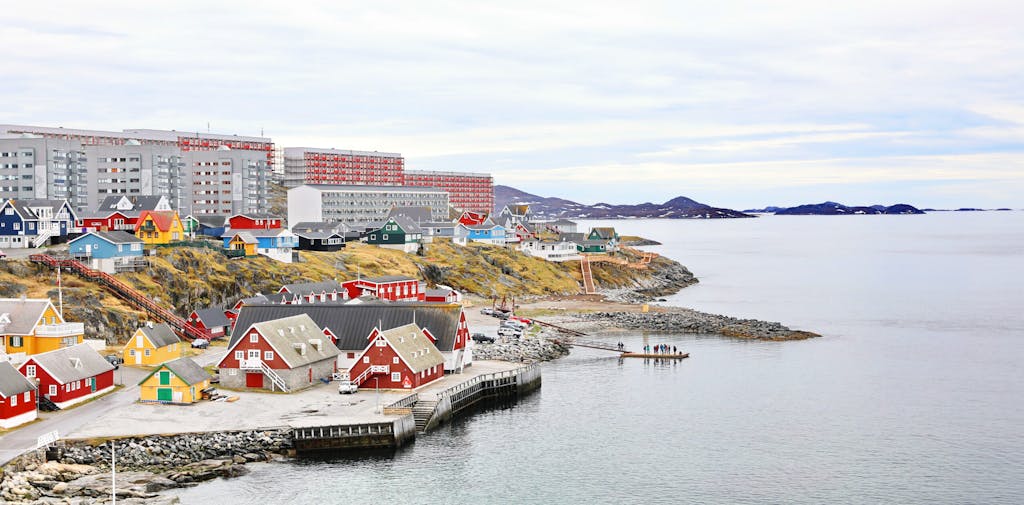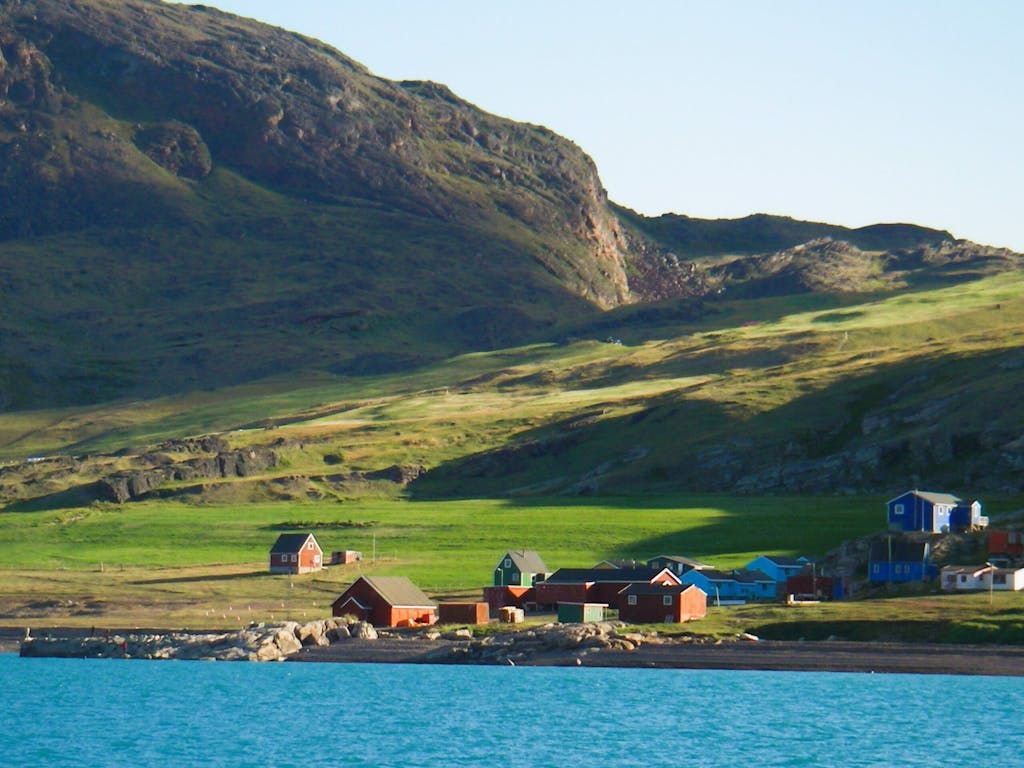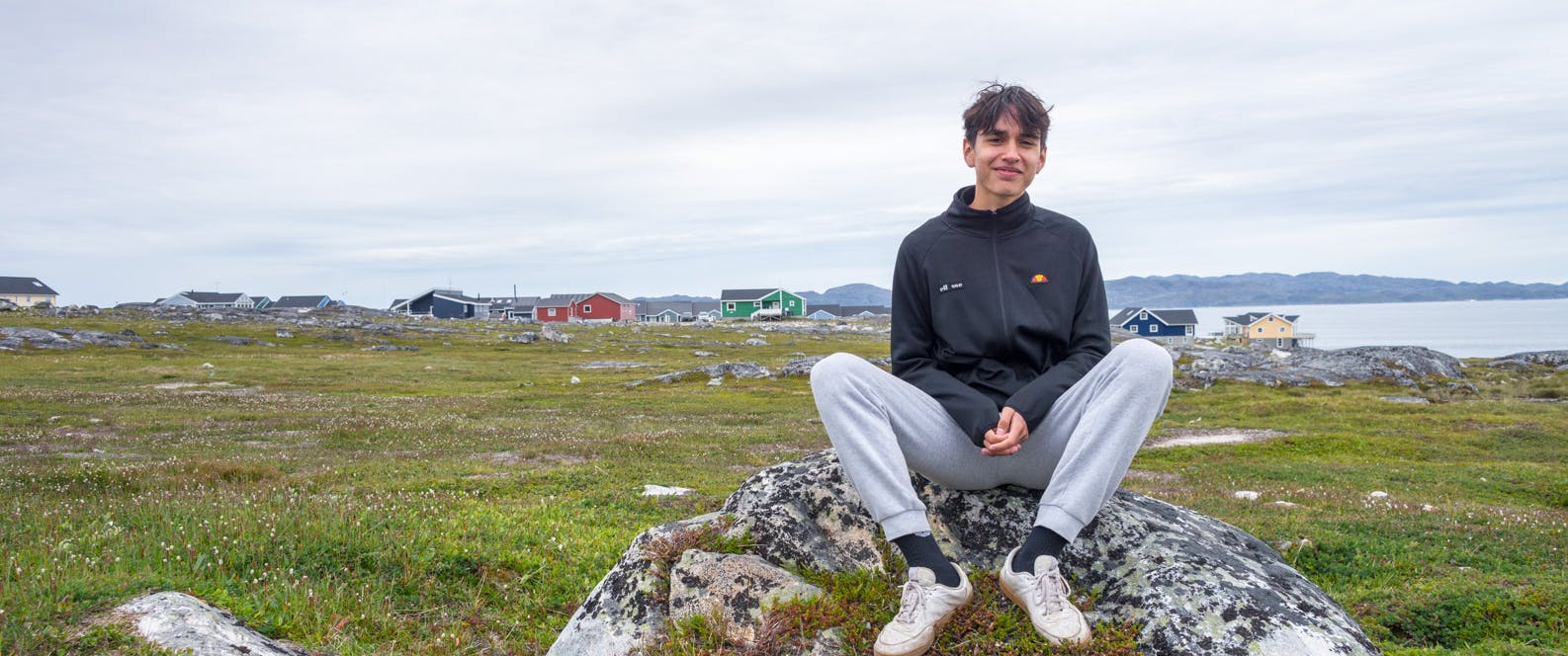What’s Arctic Greenland Really Like? We Ask Locals to Share Their Stories
When a cruise ship docks in a major city, shore excursions are often slickly packaged and managed. If you’re landing in a remote port that receives only a few ship calls a week, the experience is less predictable.
Sometimes the excursion is an unexpected delight. On an Arctic cruise on Silversea’s Silver Wind last summer, a visit to Nuuk, the island’s largest city, provided a disarming glimpse into Greenlandic culture and perspectives. Our guide for an hour-long coach tour was an 18-year-old named Niklas Andersen, a member of Gen Z (born 1997 to 2012) pictured in photo at top. As our bus — a local public transport bus — pulled away from the pier, the droll but charming high schooler invited the 20 or so visitors aboard to ask him about his hometown.
Here’s how Niklas introduced himself:
Welcome to Nuuk, the place where I [was] born. It’s very common for Greenlanders to live in Denmark, to get further education or if you have family….I lived in Denmark for five years. We’re kind of mixed here in Nuuk: 75 percent Greenlandic and 25 percent Danish.

We drove away from the port on a street named with one of the many tongue-twisting words common in the Greenlandic language: Aqqusinersuaq. The name flowed off Niklas’ tongue. Greenlandic is just one of three languages he speaks fluently, including Dutch and English. Several of us had questions about his schooling and whether he planned to continue his education in Greenland or Denmark. He continued:
From age 16 to 19 I [got] paid around $800 a month to attend high school. In my typical day, I go to a gymnasium, which is like a high school, with, overall, 500 people. I go to school from 8 to 4, and I play handball — Denmark is the world champion. I also play for the under-20s national team, so sports are a big part of my life. Right now, I study social science, and I think my future studies will have to do with that.
With a population approaching 19,000, Nuuk holds about a third of Greenland’s residents. The rest are scattered in towns and villages lining the coast. But Niklas thinks the population in most towns is declining as people seek the opportunities available in the city.
Traffic lights and no lack of conveniences in Nuuk

Nuuk may be more functional than it is pretty, but it doesn’t lack for conveniences. A stroll through the main supermarket reveals a produce section brimming with ripe, handsome avocados, delicious-looking mangoes and lemons, and a meat counter that was well stocked and clean. Niklas notes, with some pride, that Nuuk now has three traffic lights. Niklas explains:
Nuuk is rapidly growing. We will go through the small suburb of Qinngorput, where I live. It didn’t even exist 15 years ago. There are a lot of Danish people moving here. There are many work opportunities because we need so much here. We have jobs to offer. We also have people from the Philippines and Thailand moving here, more than 1,000 in Nuuk. They work in cafés, bakeries, grocery stores, dentists.
The bus crawls through the city center on good roads, pulling over at a viewpoint overlooking Nuuk’s harbor, where fishing boats are paused for a midday rest.
In the distance, earth-moving equipment was extending the airport runway to allow bigger planes from Europe and, perhaps, North America, to land. Nuuk’s airport serves mainly the smaller towns lining the coast, none connected to the other by road. He explains:
That big pile of stones and concrete is the new airport. It’s expensive to go any place from Greenland and requires a lot of time, so that airport will really help us. Right now, to get to the United States, you have to fly to…Copenhagen or Iceland, and then to New York. [Soon] you will be able to fly directly to New York.
The tourism industry is not that big in Greenland, so I don’t think the airport is going to change Nuuk much. But it’s a lot of money to build the new airport. Many people feel the money should have been spent in other ways. There is a lot of need here.
What Denmark brings to the table

Greenland has the lowest population density of any land mass in the world. Niklas suggests the Danish government — which subsidizes Greenland’s GDP to the tune of a half-billion U.S. dollars annually — doesn’t focus on the smaller settlements, some of which number just a few dozen inhabitants and can be isolated. The population has shrunk as people relocate to the larger towns. Such tension fuels, in part, the movement to separate from Denmark. Here’s what he thinks:
From my view, we have many benefits from Denmark. We receive a lot for a population that’s so small. Economically, it’s beneficial for us. The Danish missionary who colonized Greenland forced us to be Christians. This created a tension and trauma around how the Danish treated Greenlanders. It wasn’t that great for the Greenlanders, and it was passed down for generations and generations.
Nuuk sits at the tip of a narrow finger of land protruding into the Labrador Sea, wrapped by a lattice of fjords. In summer, icebergs calved from the glaciers flowing from well upstream pepper the horizon. The stark beauty of granite, ice and sea belies a secret: Greenland is rich with mineral resources.
Two small mines are extracting ruby and anorthosite, and another company looks to launch a gold mine. The subsoil is loaded with rare earth metals, precious stones and coal. Niklas observes:
There are a lot of raw materials here. But mining is really hard to do because it is in very remote areas. Some things, like the uranium in South Greenland, are in a very delicate area near sheep farming, and it could destroy their industry.
Northern Lights, yes. Polar bear transport, no

On a cruise through Greenland, in small towns we encounter many people who fish and hunt. Even in Nuuk, fishing and hunting are a big part of the culture, Niklas says. Fishing boats sail up or down the coast to hunt reindeer and rabbits and small animals. What’s not part of his life, Niklas says, is polar bears, which generally are found only north of the Arctic Circle. He explains:
People ask me if I ride a polar bear to work or school — the answer is no. It’s the biggest misconception visitors have, but I’ve not seen a polar bear.
Winter months are cold and dark; the sun sets as early as 2 p.m. The lack of sunlight means many people take vitamin D.
Niklas enjoys skiing, snowboarding and snowmobiling, and in winter, the northern lights usually can be seen a few times each week. Such an environment may be alien, or even unthinkable, to many of us, but as the bus pulls to our final stop, the Greenland National Museum, Niklas tells us if he goes away to university, he’ll be back.
I want to live in Greenland. There’s a peace here. It is not that stressful. My family lives here, and we are close.
And how, I ask, do you say thank you in Greenlandic?
Quoanoq.
Ready to explore the Arctic region? Start by choosing among these cruises to Greenland.
